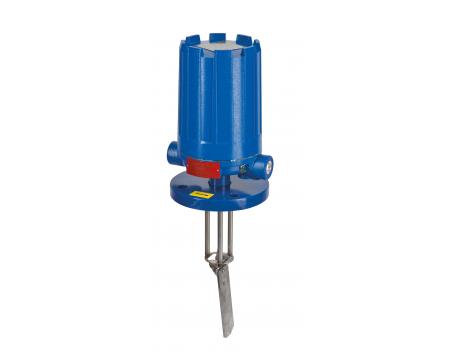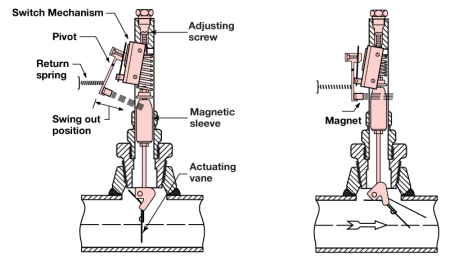
Magnetrol® flow switches are highly reliable flow control solutions utilized to sense the presence or absence of flow in horizontal pipelines. Model F10 switches are vane actuated for use on gas or liquid flow applications in 2 inch or larger line sizes.


 The actuating vane is magnetically linked to a pivoted electric (or pneumatic) switch, which is isolated from the process by a non-magnetic barrier tube. As the actuating vane moves with an increase in flow, it drives a magnetic sleeve into the field of a permanent magnet located outside the barrier tube which trips the switch. As flow decreases, the actuating vane returns to a vertical position, allowing the magnet and switch assembly to return to the “No Flow” position.
The actuating vane is magnetically linked to a pivoted electric (or pneumatic) switch, which is isolated from the process by a non-magnetic barrier tube. As the actuating vane moves with an increase in flow, it drives a magnetic sleeve into the field of a permanent magnet located outside the barrier tube which trips the switch. As flow decreases, the actuating vane returns to a vertical position, allowing the magnet and switch assembly to return to the “No Flow” position.